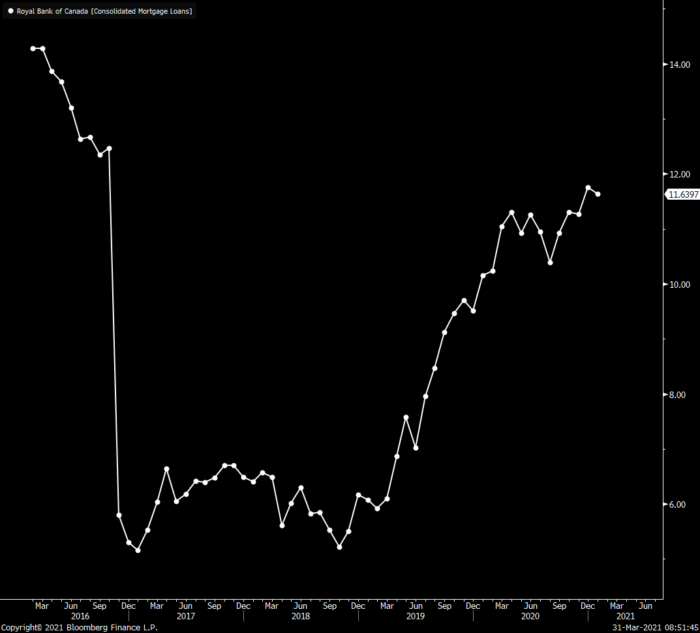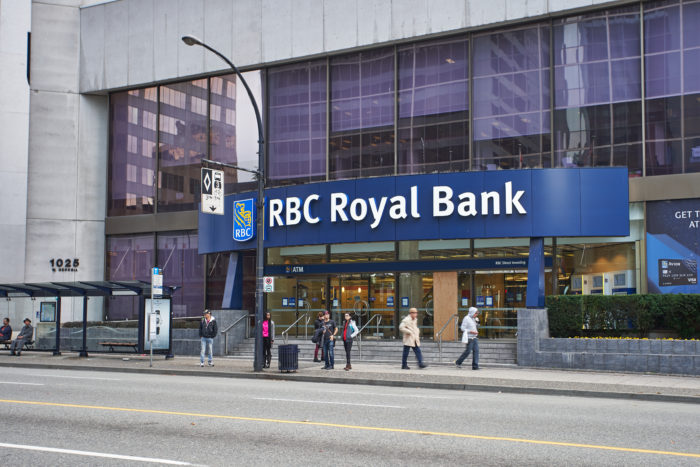The country’s largest mortgage lender was hemorrhaging market share in 2016. At the time, it was a grave worry in RBC management circles — as mortgages are a foundational business. Home loans are often the first entry into a customer’s wallet. They provide significant returns on equity and they come with high borrower retention rates (more than 90% of RBC’s mortgage customers stay with the bank at renewal).
Bay Street analysts were noticing in 2017 that the bank needed fixes, fast. RBC was so concerned that it completely re-analyzed its entire mortgage business. Management invested heavily in digitizing its mortgage processes. It then sped up response times, loosened selected lending policies and hired more salespeople (“mortgage specialists”).
But it also did something even more impactful. One of RBC’s biggest errors was that “We tried to charge prices higher than the market,” said Neil McLaughlin, Group Head, Personal & Commercial Banking at last week’s NBF Financial Services Conference. That strategy was a mistake, he admitted. “We realized you can [quote mortgage rates] at the upper bound of the market, but you can’t be 10 bps over the market.”
You sure can’t, not when all it takes is a few clicks in a browser to compare your competition’s rates. This isn’t the 1970s anymore. You no longer have to meet a banker to get a mortgage. In fact, at some online-focused lenders you don’t have to meet anyone.
Banks like RBC invest billions in branding, but these days, brand doesn’t get you as far with mortgage consumers unless that brand reflects exceptional value (e.g., HSBC). Consumers are heavily armed with rate intelligence and aren’t as concerned about lenders going out of business (which is not a risk worth worrying about). The bottom line: far fewer prime customers will pay up for a mortgage in the digital era and RBC had to learn that the hard way.
The more that mortgage comparison sites take hold, the greater the risk (to lenders) of a premium pricing strategy. Ultimately, all lenders will realize they’re in a commoditized business where price is the overwhelming differentiator and you’ll see more concentration of pricing around the mean. Factors besides price are obviously important too, but fewer and fewer non-existing customers will pay 10 bps more than average simply because you have a lion in your logo.
RBC’s price and distribution fixes ultimately paid off. As of the latest data we could find on Bloomberg, RBC’s January 2021 year-over-year mortgage growth led all the Big 5 banks at 11.6%. That’s 3.6 percentage points more than the next closest competitor, Scotiabank. Big blue now almost “gets it.”

For the latest RBC mortgage rates, including our estimates of RBC’s non-public discretionary mortgage pricing, see: RBC mortgage rates.

 log in
log in

3 Comments
Not sure if they are competitive even now. I was working with both RBC and CIBC for my mortgage since last year and RBC was always 20bps more than CIBC before and during the Pandemic.
To echo what Garry said, when I was shopping (and anecdotally from my friends), CIBC, BMO and TD were the big bank players who were competitive. No one received anything attractive from RBC.
@Garry & @Scot, I hear the same thing all the time. I also hear the reverse sometimes. Sadly big banks do not have uniform pricing. It’s still a haggle process and the rate you get is still heavily dependent on who you talk to at the bank and what kind of customer you are.
Contrast that to a HSBC, for example, which openly advertises everyday-low rates for almost all prime borrowers.
I can assure, however, that a minority of RBC customers are getting exceptional rates–for what that’s worth!